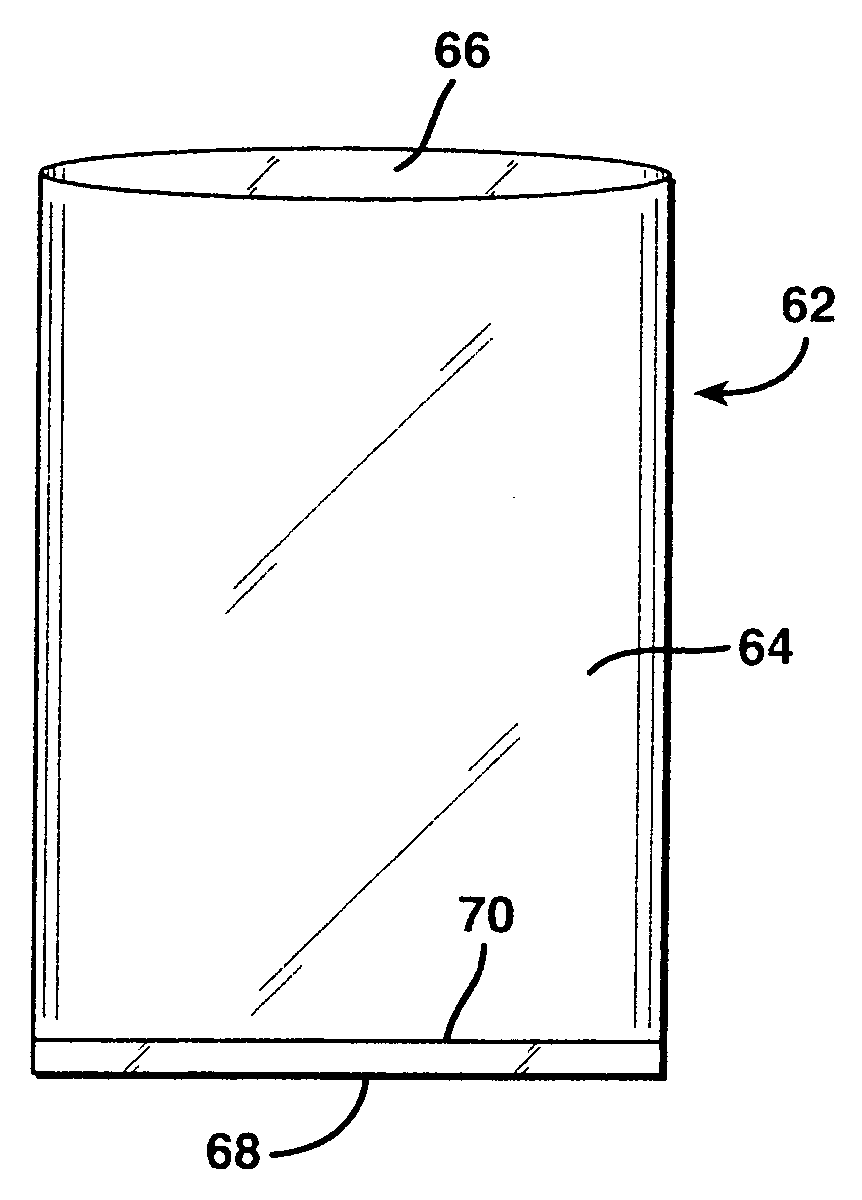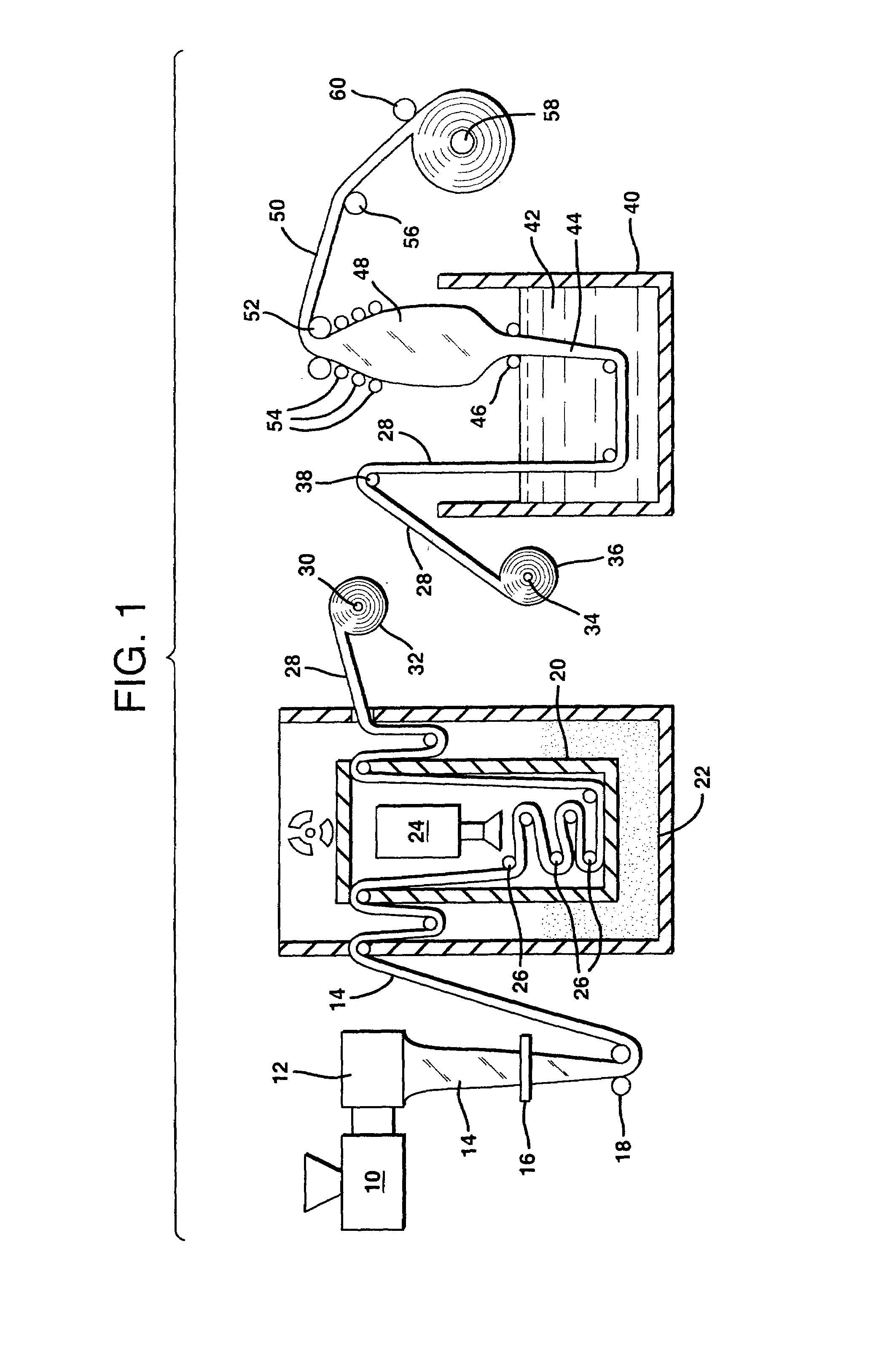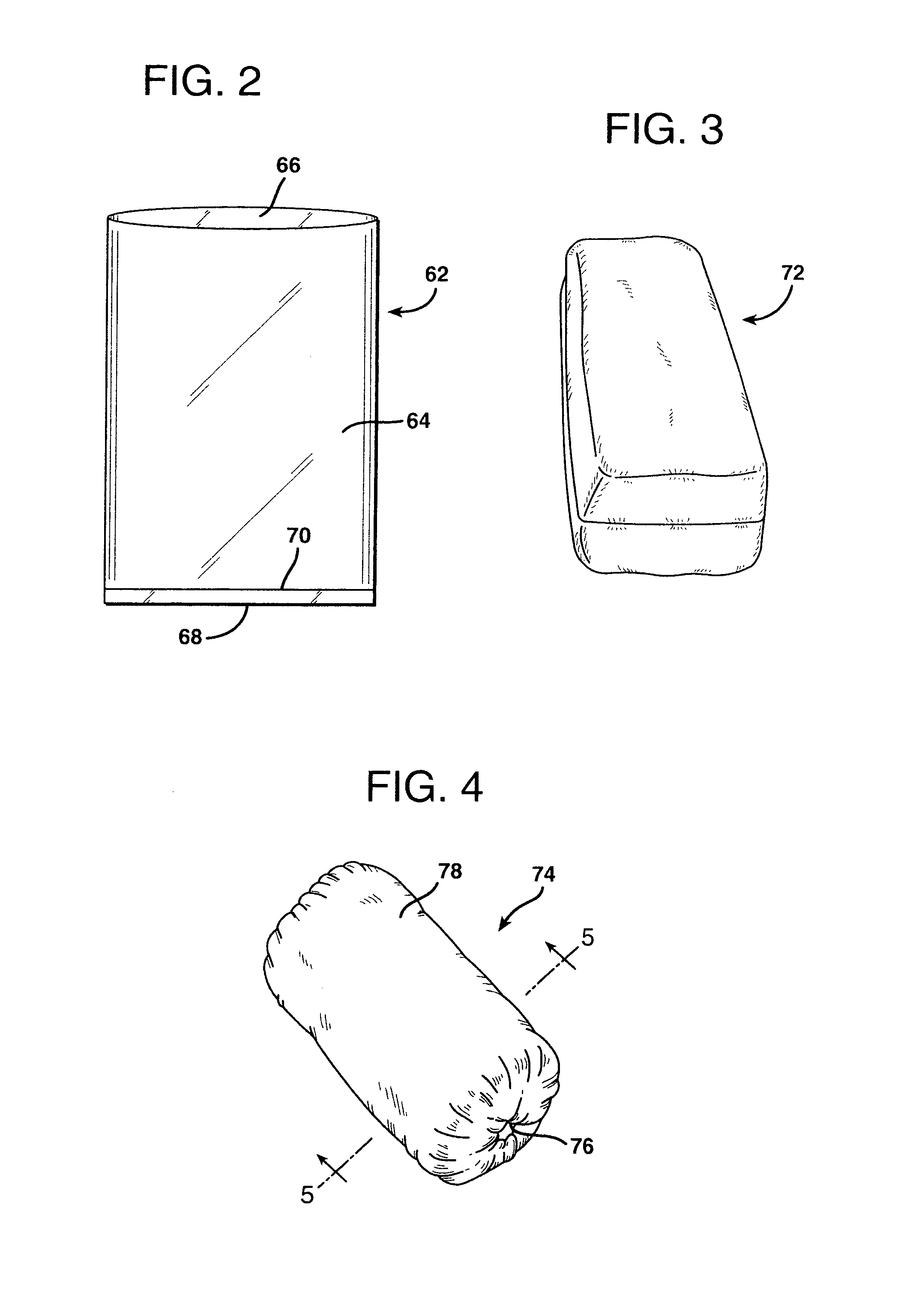Additive transfer film suitable for cook-in end use
a transfer film and additive technology, applied in the field of multi-layer films, can solve the problems of shortening the shelf life of cooked meat products, waste, inefficiency, and laborious process of unpacking, smoking and repacking meat products, and achieve the effects of preventing or reducing purging, avoiding handling, waste, and contamination
- Summary
- Abstract
- Description
- Claims
- Application Information
AI Technical Summary
Benefits of technology
Problems solved by technology
Method used
Image
Examples
example 1
Coated Film 1A: Coating, Backseaming, Stuffing, Sealing, Cooking, and Color Transfer
[0159]Coating Formulation No. 1 was used to coat Film No. 1. Prior to the coating process, the film was corona treated on the food-contact side (i.e., the layer comprising 70% LLDPE #1 and 30% EAA#1). The coating was applied using a gravure roll in such a manner that approximately one inch along each of the machine-direction edges of the film remained uncoated. The resulting coated film was then slit on one side to completely remove one of the uncoated edge portions of the film. The remaining coated film (having one uncoated edge region) was folded longitudinally, i.e. along its length, about a forming shoe, with opposed edges being joined by applying a heat seal longitudinally over the overlap to form a lap seal, done in intermittent, i.e., semi-continuous manner (commonly referred to as backseaming). The backseaming was done in such a manner that for the overlap, the uncoated part of the film was t...
example 2
Coated Film 1B: Coating, Backseaming, Stuffing, Sealing, Cooking, and Color Transfer
[0169]The coating of the other side of Film No. 1 demonstrated that the coating could be carried out on a 100% LLDPE surface. The 100% LLDPE surface of Film No. 1 was corona treated and coated by the method described immediately above. The resulting coated film was then also backseamed as described immediately above, resulting in a backseamed casing having the coating on the inside surface thereof.
[0170]A packaged product was made as in Example 1, with the meat also being cooked as described in Example 1. Unpredictably and surprisingly: (a) the coating remained intact during the shirring process; (b) the distribution of the additives (liquid smoke and caramel) was uniform on the surface of the cooked meat (neither mottled nor smeared), and (c) the film was clear and what little purge there was not highly colored.
example 3
Film Coating Backseaming, Stuffing, Sealing, Cooking, and Color Transfer
[0171]The coating of Film 2 demonstrated that the coating could be carried out on a polar surface such as polyamide. Before coating, corona treatment was applied to the outer layer containing of 50% Nylon #1 and 50% Nylon #2. The coating of Film No. 2 was carried out in the manner as generally described for the coating of Film 1. The coating was applied to the outer surface which had been corona treated. The resulting coated film was then backseamed as described above, resulting in a lap-sealed backseamed casing. This backseamed casing was then clipped at one end and filled with uncooked turkey meat from the open end, and clipped again. The meat was then cooked in a high humidity environment from 145° F. to 170° F. for several hours. After chilling the meat was evaluated for color transfer. Upon stripping the film from the meat, it was found that the color had been completely transferred to the meat. Unpredictab...
PUM
| Property | Measurement | Unit |
|---|---|---|
| Mass | aaaaa | aaaaa |
| Mass | aaaaa | aaaaa |
| Mass | aaaaa | aaaaa |
Abstract
Description
Claims
Application Information
 Login to View More
Login to View More - R&D
- Intellectual Property
- Life Sciences
- Materials
- Tech Scout
- Unparalleled Data Quality
- Higher Quality Content
- 60% Fewer Hallucinations
Browse by: Latest US Patents, China's latest patents, Technical Efficacy Thesaurus, Application Domain, Technology Topic, Popular Technical Reports.
© 2025 PatSnap. All rights reserved.Legal|Privacy policy|Modern Slavery Act Transparency Statement|Sitemap|About US| Contact US: help@patsnap.com



